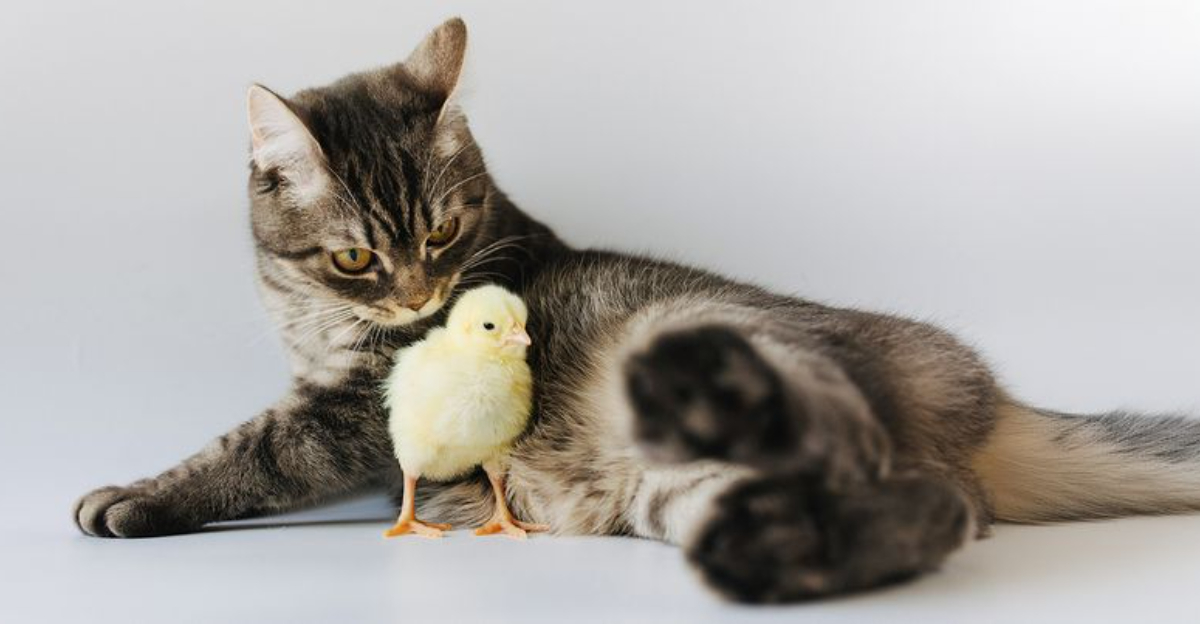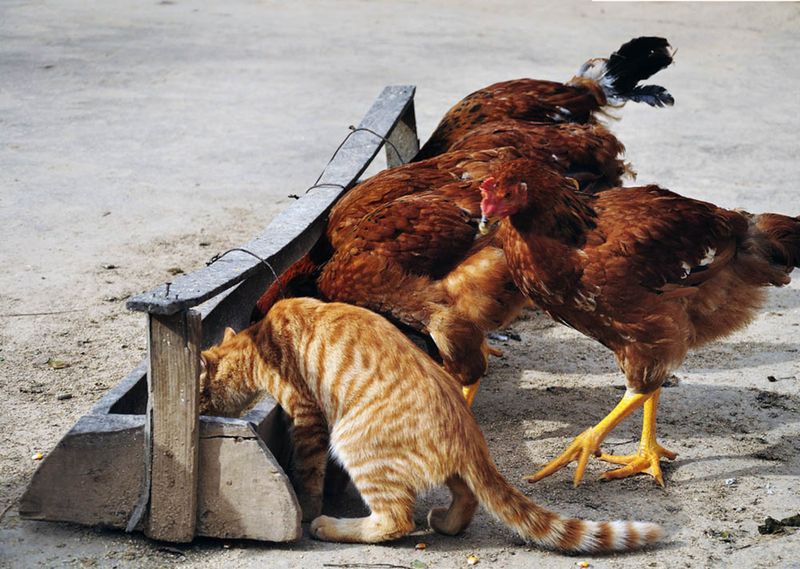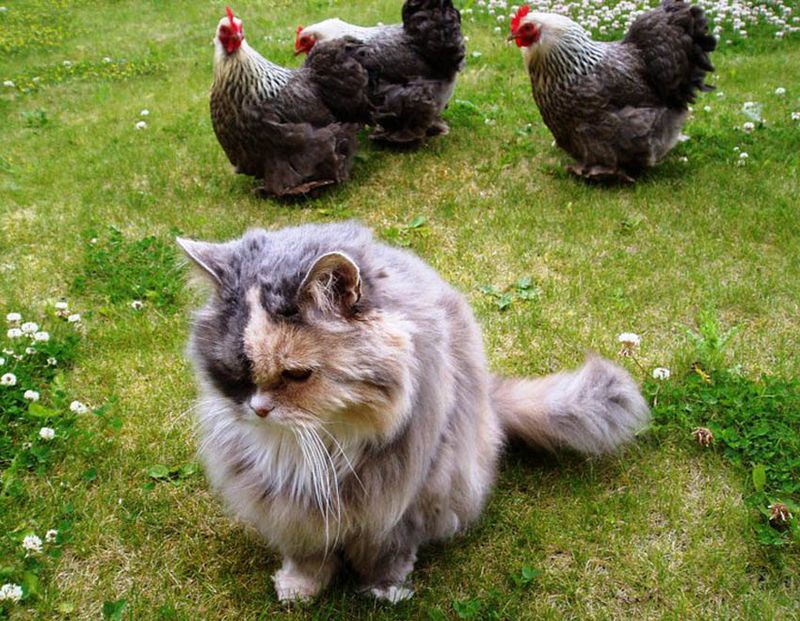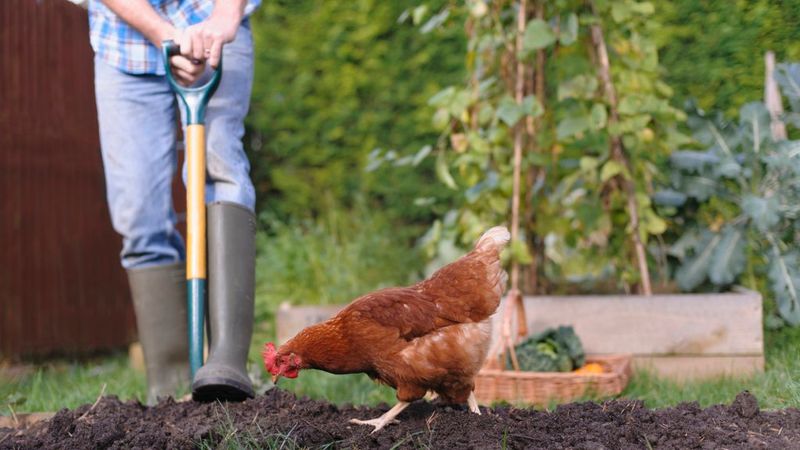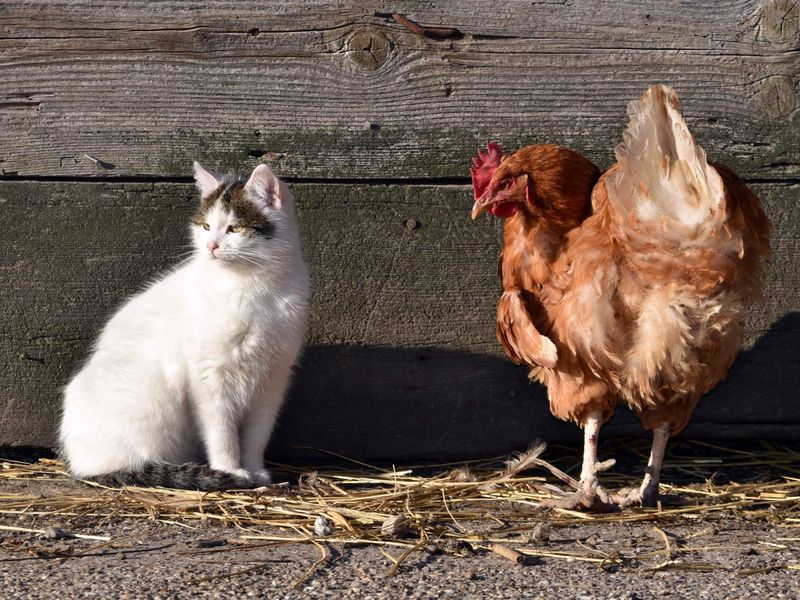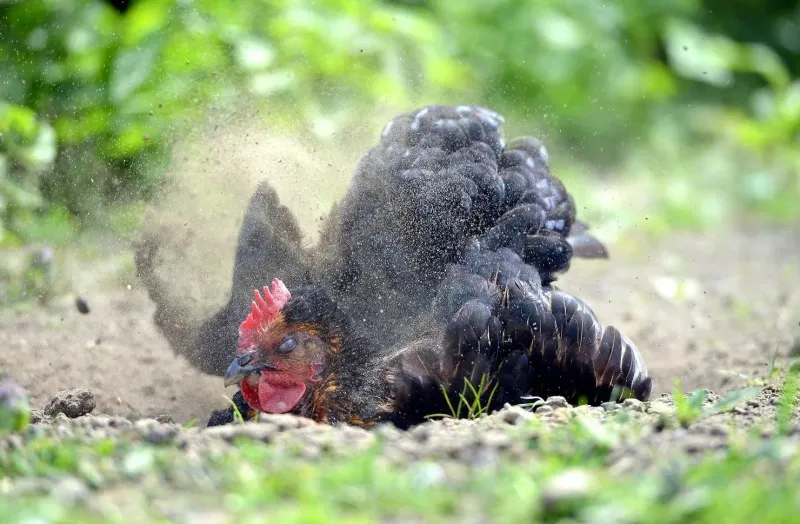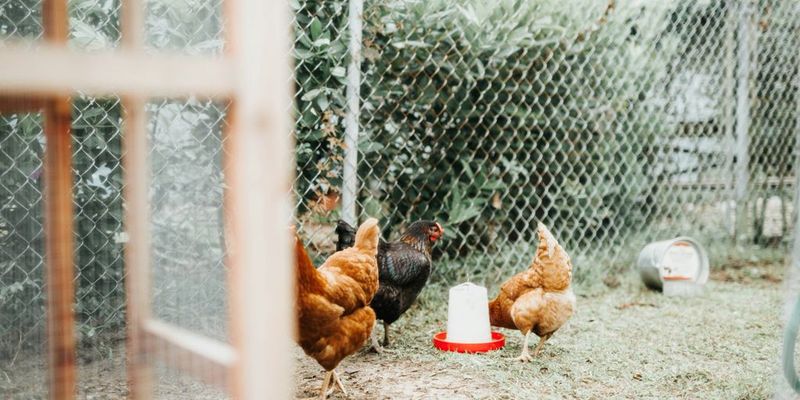📖 Table of Content:
- 1. Chickens Sometimes Rule the Roost—Literally
- 2. They Might Share Snacks (or Steal Them)
- 3. An Unspoken Truce Forms (Most of the Time)
- 4. Chickens Help With Pest Control (and Cats Don’t Mind)
- 5. They Might Cuddle (Under Very Rare Circumstances)
- 6. Chicken Dust Baths Confuse Cats
- 7. A Lesson in Patience and Territory
It’s not uncommon for backyard animal lovers to consider combining pets for practical or space-saving reasons. Cats, with their sleek independence, and chickens, with their bustling routines, might seem like an odd mix—but more and more homesteaders are discovering that these animals can not only cohabitate, but sometimes even thrive in each other’s company. While the initial setup may seem like an experiment in chaos, the results can be unexpectedly heartwarming and fascinating.
There’s no clear manual on how these two species will interact because every animal has its own personality. However, a growing number of anecdotal experiences show patterns that defy expectations. From cats backing down to bossy hens to chickens nibbling on feline food, these interactions often reflect a complex negotiation of space, instinct, and mutual curiosity. The surprising harmony that sometimes emerges might just teach us a thing or two about tolerance and adaptation.
This article dives into seven genuinely unexpected things that can unfold when cats and chickens share a backyard. These aren’t just quirky tales—they reveal the layers of animal behavior that surface when predators and prey are forced to live side-by-side. Whether you’re thinking of mixing your own flock and felines or just intrigued by cross-species interaction, prepare to be surprised.
1. Chickens Sometimes Rule the Roost—Literally
Sometimes, what could be a predator-prey relationship turns into nothing more than polite indifference. Many cats, especially well-fed house cats, simply don’t see chickens as worth the hassle. After a few exploratory sniffs or a surprise peck to the nose, most cats quickly reassess their interest. Chickens, meanwhile, aren’t always helpless and may give a haughty glare or a flurry of feathers to enforce their space. It’s not friendship in the usual sense, but more like an awkward peace treaty. Over time, both animals learn to exist in parallel, each doing their own thing without much interference. While initial curiosity can spark tense moments, they often dissolve into benign cohabitation.
2. They Might Share Snacks (or Steal Them)
Contrary to what you might expect, it’s often the chickens that establish dominance in the yard. Assertive hens have been known to peck at, chase, or corner cats that get too bold or too close. The natural boldness of chickens in protecting their food, flock, or nesting space can catch cats off guard. Rather than fight back, many cats simply walk away, confused by the bird’s bravado. These moments create a kind of pecking order where chickens unexpectedly take the top tier. Backyard owners often find this role reversal both amusing and surprisingly sustainable. Respect for the pecking hen becomes the unwritten rule of the shared yard.
3. An Unspoken Truce Forms (Most of the Time)
In a mixed backyard, curiosity often extends to what’s in each other’s food bowls. Chickens, always on the hunt for tidbits, will gladly investigate a bowl of cat kibble left unattended. Cats, meanwhile, sometimes find chicken feed or even fresh eggs an interesting treat, if not properly stored. These food forays can lead to squabbles or just humorous thievery, depending on the animals’ temperaments. Owners often have to get creative with elevated feeders or secure bins to maintain peace. Observing these animals “shop” each other’s menus becomes part of the daily routine. It’s a reminder that food is a universal motivator—no matter the species.
4. Chickens Help With Pest Control (and Cats Don’t Mind)
There’s a quiet teamwork that emerges when chickens scratch and peck through the yard in search of bugs. While cats may ignore insects altogether, chickens happily reduce pest populations like ticks, flies, and beetles. This unexpected overlap in benefit creates a cleaner environment for everyone involved. Cats often watch the chickens forage, their tails flicking with curiosity, but rarely interfere. A side bonus is that chickens’ presence can even deter rodents, further reducing the cat’s hunting burden. Some cats appreciate the reduced competition for small game; others just nap nearby as the chickens do the dirty work. In this way, both species benefit without even trying.
5. They Might Cuddle (Under Very Rare Circumstances)
Occasionally, when both animals are raised together from a young age, a bond forms that defies instincts. Photos of cats curled up next to a resting hen may seem like internet myths, but they do happen. Shared body heat and companionship can override caution in very calm environments. These moments are more likely on cold mornings or in shaded nesting areas where comfort trumps suspicion. While not common, they reflect the capacity for cross-species comfort when conditions are just right. It’s in these small, silent moments that true backyard peace becomes visible. A cat purring beside a resting chicken is more than cute—it’s profound.
6. Chicken Dust Baths Confuse Cats
Chickens have a peculiar habit of bathing in dirt to clean their feathers, a ritual that seems counterintuitive to most animals. Cats, notoriously tidy, often sit nearby with perplexed expressions as chickens flap and wiggle in dusty hollows. At times, cats might even attempt to mimic the behavior, resulting in some awkward and ineffective dirt rolls. The contrast in hygiene methods becomes a recurring spectacle for owners. Watching the confused feline reactions is often comedy gold. Despite the differences, there’s no conflict—just a gentle reminder that cleanliness means different things to different creatures. And sometimes, observation is its own kind of participation.
7. A Lesson in Patience and Territory
Every shared space becomes a microcosm of compromise, and the backyard is no exception. Both chickens and cats gradually learn the invisible lines they can cross—and which ones they can’t. Cats may stalk too closely at first but learn quickly when a chicken flaps or squawks. Likewise, chickens test boundaries, sometimes approaching a snoozing cat until they get swatted away. These interactions aren’t hostile but rather educational, helping both animals adapt to shared space. Over time, routines form that keep both parties content. What starts as chaos often evolves into a quiet choreography of mutual respect.
